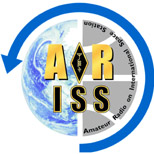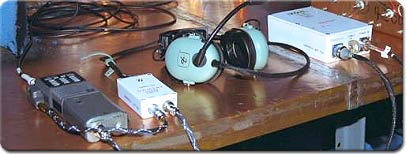International
Space Station ReferenceHam
Radio
When
astronauts, cosmonauts and mission specialists from many nations fly on the international
space station, they will have amateur, or ham, radio as a constant companion.
Since
its first flight in 1983, ham radio has flown on more than two-dozen space shuttle
missions. Dozens of astronauts have used the Space
Shuttle Amateur Radio Experiment, or SAREX, to talk to thousands of
kids in school and to their families on Earth while they were in orbit.
They have pioneered space radio experimentation, including television and
text messaging as well as voice communication. The Russians have had a
similar program for the cosmonauts aboard the Russian Space Station Mir.
When U.S. astronauts were aboard Mir in preparation for the long duration
missions of the international space station, they used amateur radio for
communication, including emergency messaging while Mir was in distress.
 | | ARISS
was created in 1996 to meet certain objectives and was the logical outgrowth of
the very successful amateur radio activities on the Mir space station and the
space shuttle. |
As
human space flight moves into a new uncharted era, an organization called ARISS,
which stands for Amateur Radio on international space station, has been formed
to design, build and operate equipment. In 1996, delegates from major national
radio organizations and from AMSAT,
which stands for the Radio Amateur Satellite Corporation, in eight
nations involved with the international space station signed a Memorandum
of Understanding to form ARISS.
NASA
and the Russian space organization Energia
have signed agreements that spell out the place of amateur radio on the station.
A technical team, called ISS Ham, has been officially established to serve as
the interface to support hardware development, crew training and on-orbit operations. In
the United States, the American
Radio Relay League, which is also known as ARRL, and AMSAT provide leadership
and consultation. They also donate and build hardware as well as making sure safety
and qualification tests are successfully completed so the equipment can fly. The
Russians have provided ports so that antennas can be mounted on the station's
Zvezda Service Module -- the space station unit that provides living quarters
for the astronauts and cosmonauts. United States and Russian teams have trained
the astronauts and cosmonauts to operate the equipment. The Italian team has designed
and built antennas. The German team has built sophisticated repeater stations
that will allow crews to make recorded reports on their daily activities and permit
hams on Earth better contacts with men and women aboard the station. 
This is
a photo of the initial radio station amateur equipment while it was being tested.
After testing, the equipment was stowed aboard space shuttle Atlantis for delivery
to the international space station during STS-106.
The
initial space station operations will be mostly voice and packet, a text messaging
device. The first initial radio station was flown onboard the space shuttle
Atlantis on STS-106. The crew transferred the ham radio gear into the space
station for future use by the Expedition One crew.
More
than 40 missions over five years will be required to assemble the international
space station in orbit. The astronauts and cosmonauts will work hard on
these missions, but they plan to take some time off for educational outreach contacts
with schools. NASA's Division of Education is a major supporter of the
amateur radio activity.
The
sponsoring agencies have stated that they consider access to a ham radio system
a requirement for psychological support of the crews, by providing family and
general contacts for people who will be in space many weeks at a time.
As
the international space station takes its place in the heavens, the amateur
radio community is prepared to do its part by helping to enrich the experience
of those visiting and living on the station. | 
